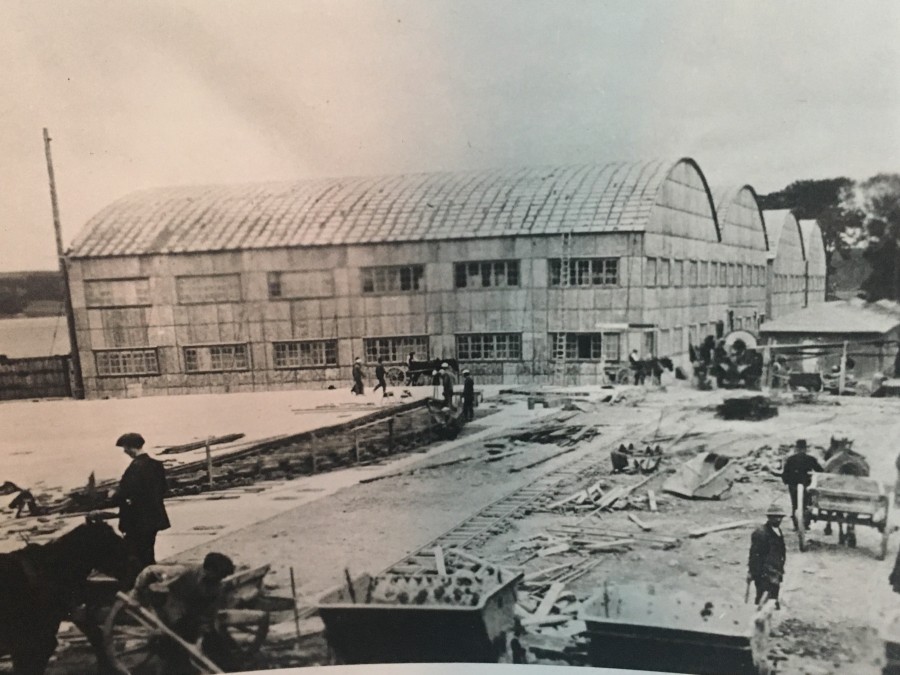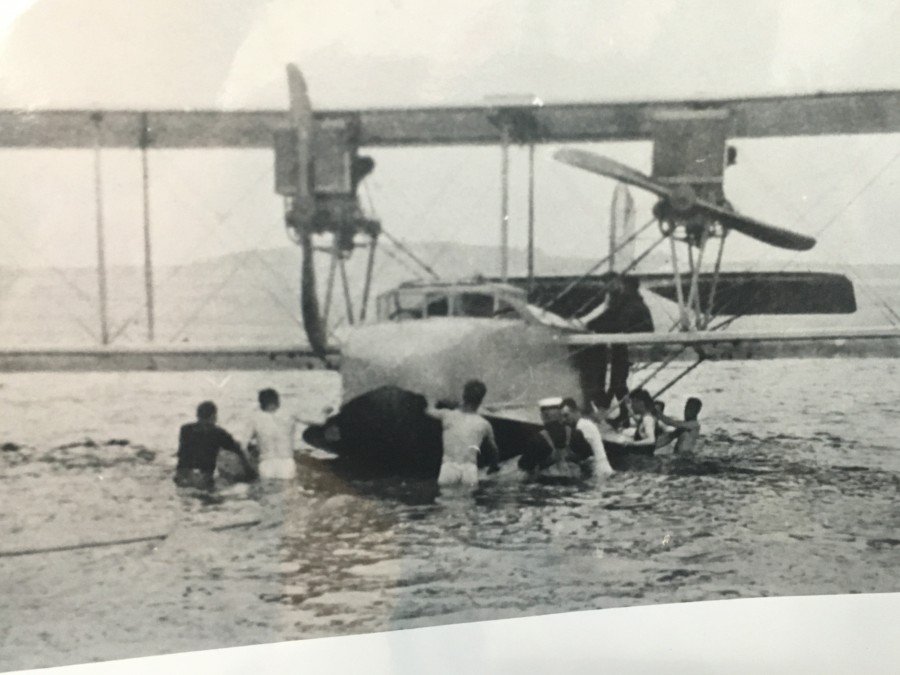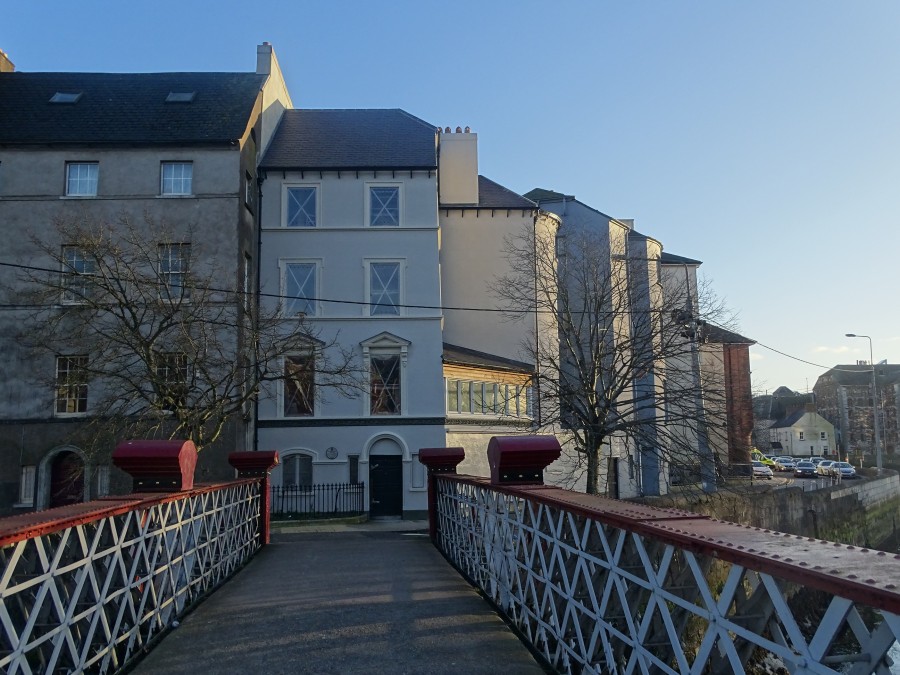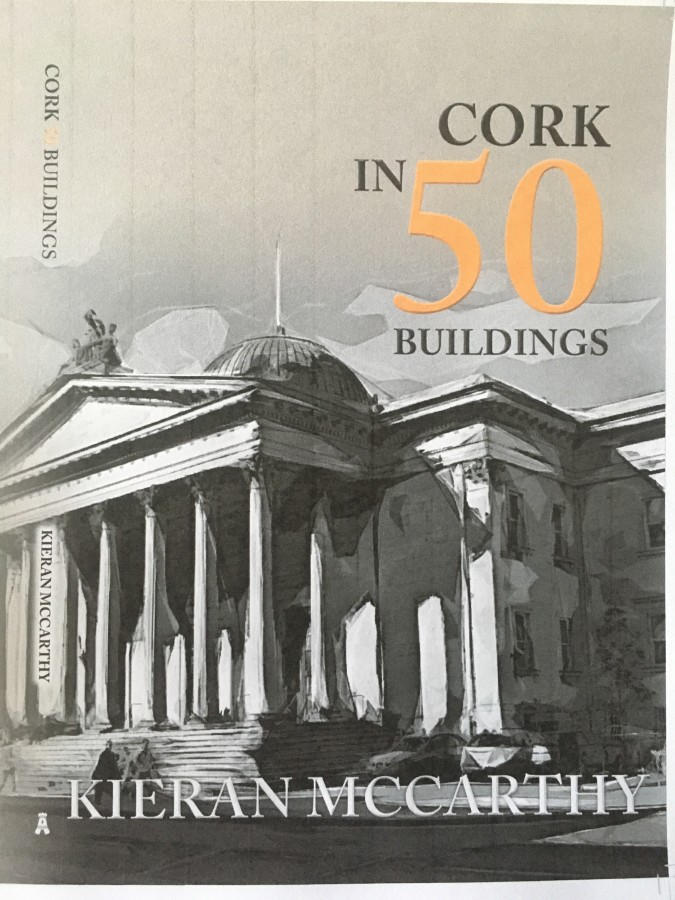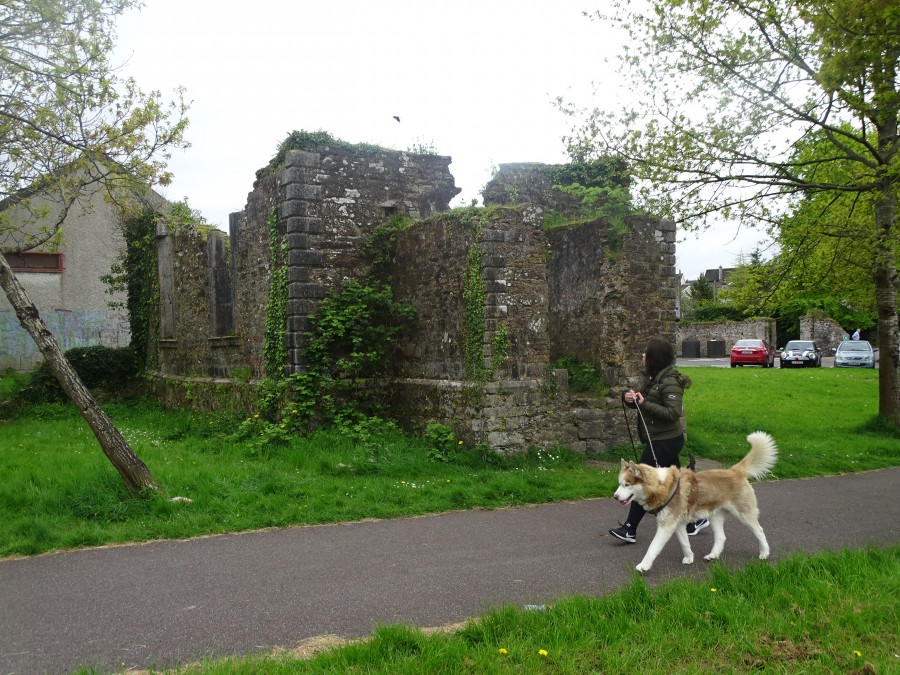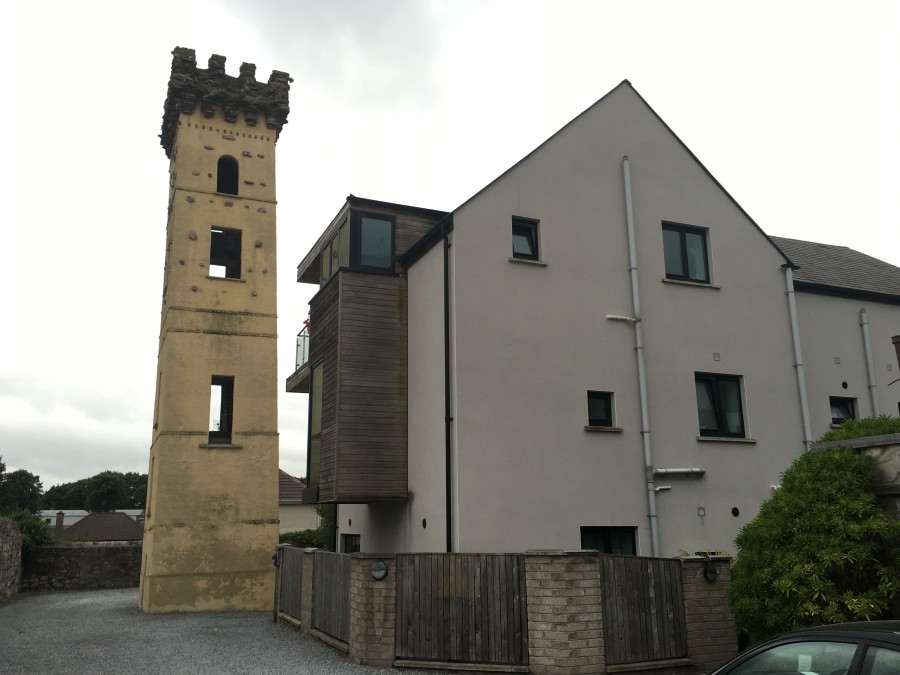Cllr McCarthy: Progress Being Made on Film in Cork Initiative.
Kieran’s Press Release
Further information has been given to members of Cork City Council on the Film in Cork initiative which is being developed by Cork City and County Councils to promote the Cork region as a location for film production. The initiative has been successful in attracting a range of films to Cork, and productions such as The Young Offenders are raising the profile for Cork as a film friendly region. The contract for delivering the initiative is currently being supported by Pooleen Productions (Rossa Mullin) under a 4 year contract. Cork City and Cork County Councils will be tendering out the Film in Cork service over the next few months.
Independent Cllr Kieran McCarthy noted that the two councils are also actively engaged in working with a range of stakeholders to develop interest in the idea of developing a film studio for Cork. “Good progress in being made; As part of the ongoing efforts of both local authorities, the case is now being made to Government for Cork to be provided with the necessary incentives that will enable to the region to compete for audio visual activity on a more level playing field.
“In the recent budget, Government announced a number of measures to promote the film industry in Ireland. Section 481 film tax credit is proposed to be extended for a further 4 years with additional incentives for the regions (subject to state aid approval)”.
Kieran’s Our City, Our Town, 13 December 2018
Kieran’s Our City, Our Town Article,
Cork Independent, 13 December 2018
Stories from 1918: The Leaving of the American Navy
“On a very fine early summer afternoon in 1917 the Americans first entered the harbour in connection with the great war now ended. Their coming, except to the official few, was almost unknown until an hour or so before their actual arrival in port. From their first landing at Queenstown, they were gladly welcomed by its inhabitants, and their presence gave an added stimulus to an already prosperous war-trade being done in the town”. Queenstown Correspondent, Cork Examiner, 6 December 1918.
Immediately following the declaration of war by the USA on 6 April,1917, a force of destroyers of the US Navy set sail for Cork Harbour, arriving there on 4 May. At that time, the Naval Aviation Command was still in its infancy and not quite prepared for the task ahead. With rigid and untiring discipline, they were regularly viewed taking on the stormy waters of the Atlantic beyond Cork harbour. They treated unfortunate men, women and children who were victims of torpedo, collision, storm or mine. Many found safety on American destroyers.
The force based in Queenstown (now Cobh) consisted of 1200-ton sloops with trawlers, drifters, destroyers, motor launches and submarines, to which were later added minesweepers and disguised armed merchant ships known as ‘Q’ (for Queenstown) ships. The lower harbour area could be illuminated at night using searchlights located at all of the forts. From the beginning, the Americans built facilities for discharging and storing their inbound cargo. A railway sprang into being on the hitherto neglected Deepwater Quay, a store-house quickly covered a portion of its surface.
To mark this physical legacy and others, Cork County Council creating a trail setting out a number of key locations within the Harbour chosen for the role they played during the First World War. The development of the trail is due to the vision of the late Cllr Claire Cullinane who was a great advocate for the heritage potential of the whole of Cork Harbour and who initially proposed the trail.
During 1918, reference is made in the press to the American Navy presence in Cork Harbour. For example, on 4 July 1918 at Queenstown, the Stars and Stripes flew from many buildings and flagstaffs, and at Haulbowline Dockyard the American flag flew with the British. Shops were closed during the day and large numbers attended sports specially organised at Aghada and Ringaskiddy. In the evening a concert in the Bathe Hall, which was largely attended by officers of the American and British Navies.
On 25 July 1918, the First Lord of the British Admiralty, Sir Eric Geddes and Mr Franklin Roosevelt, arrived in Cork. Roosevelt, later to be President of the United States was Assistant Secretary of the Navy under President Woodrow Wilson during the First World War. Sir Eric Geddes went on a tour of inspection in the South of Ireland. He paid a visit to the Government Dockyard at Haulbowline and visited the US store ship Melville and the US air station at Aghada.
A total of twenty-five air stations were established throughout Europe, five of which were to be in Ireland. All the Navy’s seaplanes were shipped to Ireland in crates and taken to Aghada for assembly before delivery to their assigned stations. Aghada also became the main training base where all aircrew training was conducted. A further vital role for Aghada was as a patrol base, searching for German U-boats from Cape Clear eastwards into St George’s Channel. But some thirteen weeks after the first flight out of Aghada, the Armistice was signed on 11 November 1918, bringing patrols to an end. Production of aircraft, which had peaked at one completed every 3 days, came to a halt and the forty-eight officers and1,398 men began leaving Aghada.
In 1921 the 3 ½ -acre site of the old World War I American Air Base was purchased by the Lower Aghada Tennis and Sailing Club for the princely sum of £5 from the Land Commission. The club originally played in the Careystown area. Ten people from the area each contributed 10/- (50p) each, and two trustees, Messrs. Terence Murphy, NT and Edmund Russell. The actual playing surface was on the remains of the old runways.
On 5 August 1918, thirteen American Congressmen on a visit to the United Kingdom arrived at Kingstown (now Dun Laoghaire and then travelled by special saloon direct to Queenstown. They were members of the Committee of Naval Forces of the House of Representatives They were coming to Cork to see the activities of the U.S. Navy overseas and of the Allied Navies. In an interview Congressman Mr. Padgett from Tennessee noted that that during the month of July they had brought 317,000 troops to Europe and that was the high-water mark. Month by month they were continuing to bring soldiers over as rapidly as possible. America, he concluded, was determined “to go on to the end and win”.
When the Armistice was put in place on 11 November 1918, the Queenstown Correspondent for the Cork Examiner on 6 December 1918 noted: “To each and every departing member of the United States Navy based at Queenstown during the war, quarterdeck and lower deck alike, its inhabitants bid God speed and bon voyage”.
Kieran’s new book, Cork in Fifty Buildings (2018, Amberley Publishing) is now available in Cork bookshops.
Kieran is also showcasing some of the older column series on the River Lee on his heritage facebook page at the moment, Cork Our City, Our Town.
Captions:
976a. American Air Base, Aghada, c.1918 (source: Aghada Historical Society & Cork Harbour Heritage Alliance)
976b. American Air Base, Aghada, County Cork, c.1918 (source: Aghada Historical Society & Cork Harbour Heritage Alliance
Heritage Podcast with Kieran
Thanks to Ainle O Caireallain at the Rebel Matters Podcast for interviewing me on my passion for Cork Heritage and creating a whole podcast! It is over an hour long!
http://directory.libsyn.com/episode/index/id/7825355
Kieran’s Question to CE and Motions, Cork City Council Meeting, 10 December 2018
Question to CE:
To ask the CE about the mechanisms in place to combat homelessness this winter in the city?
How many homelessness cases on the streets in the first weekend (1st/2nd) of December 2018?
Are their beds available for all homelessness at this point in time in the city (early December 2018)?
How many emergency accommodation units?
To ask for the breakdown of finance given to housing homeless agencies in the city in 2017 & 2018? (Cllr Kieran McCarthy)
Motion:
Motion: That the City Council organise an annual tree planting & biodiversity day with interested communities (Cllr Kieran McCarthy)
Cllr McCarthy: New Art Graffiti Space Found
Kieran’s Press Release:
Independent Cllr Kieran McCarthy has welcomed news that Council officials from the Tourism, Events Arts, and Marketing Directorate have met with the Graffiti Artists who were involved in the development of the graffiti space at White Street car park. It has been agreed that the relevant stakeholders would to work together to identify a suitable site. A wall near Fitzgeralds Park has been identified as the preferred location by all. Further engagement with the artists is ongoing to agree on any works that may be necessary for the new location to be made fit for purpose.
Cllr McCarthy noted; “I had two reasons for my recent motion. Firstly I am conscious of how used the former Whites Street carpark was for graffti art; much of it was very good and some walls were changed every month. The walls did reduce the amount of graffiti in town, providing a space for artists. All in all the works pursued on the carpark walls were possibly underestimated and not celebrated in any great way. Much of it was high quality. Secondly I am also conscious of the very positive response to the Mad About Cork murals about town on traffic and ESB boxes. In my own opinion all are tastefully done and don’t aim to insult anyone. In that light my recent motion aims to capture the work of large scale street art in a new space in the city”.
Kieran’s Our City, Our Town, 6 December 2018
Kieran’s Our City, Our Town Article,
Cork Independent, 6 December 2018
Stories from 1918: Plans for the Marsh
Discussions on the influenza epidemic, poverty and housing prevailed across the meetings of Cork Corporation in late November and early December 1918. At the public health committee of Cork Corporation on 26 November 1918 Mr J Horgan (vice-chairman) presided. Dr D D Donovan, Superintendent Medical Officer of Health, reported that the dispensary medical officers had reported 117 cases of influenza in their districts during late November as against 500 cases in previous reports. The spread of influenza still| continued, according to the doctor, in a “mild character”, with a few exceptions. It was visibly on the decline and not in epidemic form. Dr O’Donovan noted: “sporadic, cases, however, must be expected to occur for some time, and I hope that in a week or so the disease will completely disappear”.
The number of deaths registered from influenza, and pneumonia for the four weeks ending Saturday, 16 November were as follows – 30 deaths occurred from influenza, 17 civil and 13 military and from pneumonia, 14 civil and 5 military. The Vice Chairman said on the whole the report was very satisfactory. He thought that Cork had escaped the worst of the epidemic. Alderman O’Sullivan agreed with the chairman and said the fact that they had escaped so well was due largely to the precautions taken by the committee.
A joint meeting of the Public Health and Housing Committees of the Corporation was also held on 26 November 1918. Alderman Sir Edward Fitzgerald presided. Alderman P Stack said that during previous years a number of houses had been demolished in the West ward, and all Hanover Street had completely disappeared so far as housing accommodation was concerned, including the lower end of Grattan Street, Portney’s Lane, Broad Lane, Thomas Street, and Bachelor’s Quay. There was no part of the city more in need of housing accommodation than the West Ward and he expressed the need for new housing schemes.
The Chairman Sir Edward Fitzgerald said he intended to bring before the Committee what he considered was a want left unfulfilled for the previous 30 years. Whenever a housing scheme was on hand the strongest argument in its favour was to get rid of the slums on a proposed site. There was no trouble securing sites outside the city. However, he deemed the flat of the city – the Marsh and the Coal Quay was being forgotten about. There were a number of people living in those localities who could not go to live in proposed places such as Gurranabraher, Mayfield, or elsewhere. He suggested that they should offer a prize of £150 for an accepted design scheme of overhauling the Marsh and Coal Quay districts, and the “rookeries” in the adjoining lanes and alleys. He noted: “The houses should of course be as cheaply built, as possible, but the need was immediate. They could first build a dozen or two, and then continue to build others when they had those completed”.
The City Solicitor present highlighted the West Ward scheme had not been shelved and was quite as advanced as any other scheme. He detailed that the trouble was that the Corporation were unable to get any information as to the intentions of the Government. He was certain that the moment it became known what the Government meant to do with regard to the financial part of the Housing question, on what terms they could borrow money or what contribution the State was going to make, if any – the Council schemes in Cork could be pushed ahead; “it would not be his fault, or, he was sure, the fault of the Committees, if their schemes were not the most advanced in Ireland”.
The Chairman said the City Engineer should be directed to make plans in connection with the Marsh site from the Main Street to the Mercy Hospital, with a view to having information of the fullest character preparatory to the holding of an inquiry later on. His suggestion was agreed to. The City Engineer submitted photographs of small open spaces in the city, and the Medical Officer of Health was asked to inspect those, and report whether they were suitable sites. From a development perspective it would take another 30 years before new social housing was developed in the Marsh area of the city.
Alderman O’Sullivan reported that he attended the Conference of the Irish Municipal Authorities in Dublin. A report presented strived to allocate 1,250 new houses to Cork. It was discussed, and those present maintained that the minimum number of houses should be double that number, namely 2,500 not including the reconstruction of old houses which the City Engineer estimated at 2,000. Mr Cowan, Chief Inspector of the Local Government Board, agreed that the Cork demand for 2,500 new houses was, in his opinion, “reasonable”, and in his report to the Local Government Board he recommended it. Alderman O’Sullivan did not wish to make anything in the nature of political capital out of it, but he thought this scheme demonstrated the necessity of having Irish members in Parliament when the Bill came before the House. When the Bill formerly came before the House it was intended as a purely British measure, but Ireland was included as a result of the continued pressure of the Irish Nationalist Party.
Kieran’s new book, Cork in Fifty Buildings (2018, Amberley Publishing) is now available in Cork bookshops.
Kieran is also showcasing some of the older column series on the River Lee on his heritage facebook page at the moment, Cork Our City, Our Town.
Captions:
975a. Recently renovated house, formerly a residence of mathematician George Boole on Batchelor’s Quay, present day (pictures: Kieran McCarthy)
975b. Wintry perspectives, Banks of the Lee Walkway, from North Mall to the Mardyke, present day
975c. Batchelor’s Quay, c.1900 – former late eighteenth century and early nineteenth century dwellings became slums hosting 15-20 families at a time over a hundred years; many of such buildings were demolished in the early twentieth century.
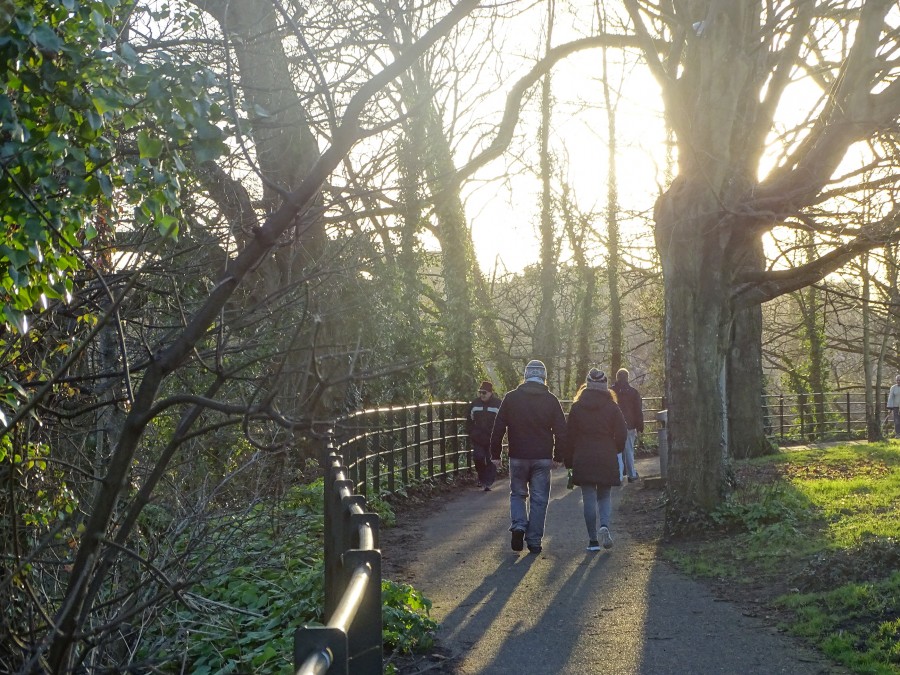
Kieran’s Our City, Our Town, 29 November 2018
Kieran’s Our City, Our Town Article,
Cork Independent, 29 November 2018
Cork in 50 Buildings
My new book for 2018 is entitled Cork in 50 Buildings (Amberley Publishing). It explores the history of this venerable old city through a selection of its greatest architectural treasures, from the St Anne’s Church, Shandon, regarded as a symbol of the city, to more recent additions such as the tower of the County Hall, once the tallest building in Ireland. This book offers a glimpse to explore behind fifty of Cork’s historic buildings. Below I outline some of my favourite buildings in order to plug the book!
Building #6 The Bishop’s Church
Protestant Bishop of Cork Peter Browne occupied the See of Cork and Ross, 1710-1735, and lived in a house he personally financed in the south west countryside of Cork City. Bishop Browne was buried in a chapel adjacent his mansion on his estate. The little chapel still exists in the heart of Bishopstown. There was a belfry on its eastern side, now gone. The western side also had a small porch ascended by a semi-circular flight of five steps of cut limestone. In the centre of the Court-yard was the Crown and Mitre set in the pavement with a yellow-coloured stone.
Building #8 The Butter Market
In 1849, an elaborate Roman temple style portico was added to the front of the butter market and this was designed by Sir John Benson. In the late 1800s, there was a distinct decline in the economic fortunes of the city. The profits of the export provision trade of agricultural products such as butter and beef declined. In 1858, 428,000 firkins of butter were been exported per annum and by 1891, this was reduced to 170,000 firkins.
Building #18 The Distillery
The house at the junction of the North Mall and Wise’s Hill was the residence of the distiller Francis Wise, after whose family the hill is named. The detached five-bay three-storey former house, built c. 1800, is now in use as a university building. The building retains interesting features and materials, such as the timber sliding sash windows, wrought-iron lamp bracket arch, and interior fittings. In the 1870s Francis Wise of Cork owned 9,912 acres in county Cork and 9,636 acres in county Kerry.
Building #33 The Pepperpot Tower
St Anne’s Church Shandon was built in 1722 with a distinctive tall tower. It was only in 1752 that its famous bells were installed. Indeed, their fame is worldwide especially with the immortal words of Fr Prout’s poem “The Bells of Shandon” echoing behind their history. Fr Prout was the pen name for Fr Francis Mahony who spent many years of his childhood living nearby, listening to the bells in the early half of the nineteenth century.
Building #34 The Philanthropic Spirit
The Cork Improved Dwellings Company also built housing in the city. This was a group, which favoured the idea of British philanthropic industrialists building workers’ housing. Established in 1860 through a shareholding idiom, one could speculate and invest, and get a return whilst at the same time providing an escape for many impoverished families from slum ridden areas of the city. The company eventually built almost 420 houses – Prosperity Square & surrounds, Rathmore Terrace on St Patrick’s Hill and Hibernian Buildings on Albert Road became their flagship projects.
Building #39 The Roman Catholic Cathedral
The present Cathedral of St Mary’s and St Anne’s is the fifth church on the site since the early 1600s (1624, 1700, 1730, and 1808). The story of the present-day structure is as follows. In 1820, an immense fire greatly damaged the fourth cathedral so much so that it was really the skeleton structure of the burned cathedral that survived. However, all was not lost and shortly after, the bishop of that time, John Murphy delegated to architect, George Pain, the rebuilding of the then 12-year-old cathedral, inside and outside. George Pain was also responsible for the design of buildings such as Holy Trinity Church, St. Patrick’s Church and Blackrock Castle.
Building #42 The Shopping Arcade
The beautiful Winthrop Arcade opened in March 1926. It connects Winthrop Street and Oliver Plunkett Street by a glass covered way and consists of twelve shops. It was the first Arcade constructed in the Irish Free State.
Building #45 The Toll Booth
The old St Luke’s Toll Booth is a beautiful freestanding octagonal-plan structure, built c.1880 and is the last reference to an ancient system of paying tolls in the city. The toll booths were owned by the Corporation of Cork and leased out to the highest bidder. In the late twentieth century, the highest bidder for the St Luke’s Booth was Mr Michael Hennessy. His father ran a newspaper business from the tiny building with the family having a nearby news agents shop there for several years.
Building #47 The Viewing Tower
The idea for Callanan’s Tower was inspired by the Crystal Palace Exhibition in London, which Michael Callanan visited in 1851. A high limestone tower would be the central point of Callanan’s proposal. The estimated cost of the scheme was £50,000. Ornamental gardens were designed, and the tall tower was constructed approximately, 25 to 30 metres in height, which assumed the shape of a medieval tall castle.
Kieran’s new book, Cork in Fifty Buildings (2018, Amberley Publishing) is now available in Cork bookshops.
Kieran is also showcasing some of the older column series on the River Lee on his heritage facebook page at the moment, Cork Our City, Our Town.
Captions:
974a. Ruined Bishop’s Church, Bishopstown present day (picture: Kieran McCarthy)
974b. Callanan’s Tower, present day (picture: Kieran McCarthy)
974c. Toll booth, St Luke’s Cross, Present Day (picture: Kieran McCarthy)
974d. Front cover of Cork in 50 Buildings by Kieran McCarthy
